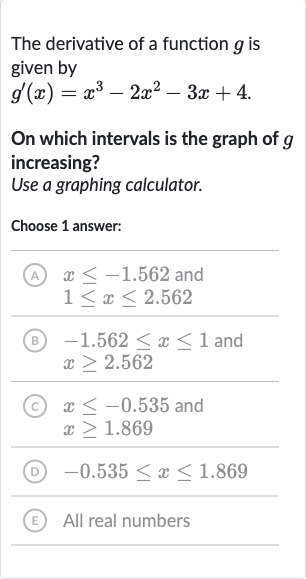Full solution
Q. The derivative of a function is given byOn which intervals is the graph of increasing?Use a graphing calculator.Choose answer:(A) and(B) and (C) and (D) (E) All real numbers
- Find Critical Points: Find the critical points of by setting the derivative equal to zero and solving for .
- Use Graphing Calculator: Use a graphing calculator to find the roots of the equation.Roots are approximately , , and .
- Determine Sign of : Determine the sign of on the intervals determined by the critical points.Test points: , , , and .
- Plug in Test Points: Plug test points into to check if the derivative is positive (increasing) or negative (decreasing).For : g'(-1) > 0 (increasing)For : g'(0.5) < 0 (decreasing)For : g'(1.5) > 0 (increasing)For : g'(2) < 0 (decreasing)
- Graph of g is Increasing: Based on the sign of , the graph of is increasing on the intervals where g'(x) > 0.Increasing intervals: and .
More problems from Ratio and Quadratic equation
QuestionGet tutor help

